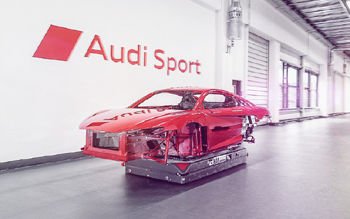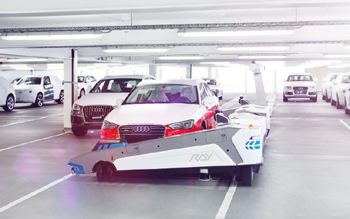 The Internet of Things promises to change the way the world works and it may very well do so first on the shop floor. While intelligent homes, smart cars, and networked traffic infrastructure is still a pipe dream for most, the Industrial Internet of Things (IIoT) has the potential to be implemented in today’s factories and supply chains for immediate benefits to early adopters.
The Internet of Things promises to change the way the world works and it may very well do so first on the shop floor. While intelligent homes, smart cars, and networked traffic infrastructure is still a pipe dream for most, the Industrial Internet of Things (IIoT) has the potential to be implemented in today’s factories and supply chains for immediate benefits to early adopters.
The Fourth Industrial Revolution – Industry 4.0
Known as Industry 4.0 in Europe, and often referred to as smart manufacturing in the US, the fourth industrial revolution brought by the IIoT is the newest sea change since the progress of the first industrial revolution in the 18th century, the changes brought by the assembly line in the 19th century, and the efficiencies brought by electronics and automation in the 20th century. As equipment, factories, and businesses become more intelligent and connected, visibility and therefore optimizations can extend from intra-plant to inter-plant. Data will be able to be shared throughout the enterprise from the plant floor to the supply chain with the potential to streamline processes, optimize supply and demand, speed time to market of new products, reduce inventories, and more.
From Lean to Smart
Focused on improving manufacturing efficiency, “Lean” has been a key trend in the manufacturing world for decades, using principles pioneered by Toyota to identify and eliminate sources of waste. Manufacturing companies have been using Lean principles to improve their bottom lines for years – what does Industry 4.0 bring to the table that Lean doesn’t?
Industry 4.0 and smart manufacturing take the Lean concept and run with it using new technologies such as the Industrial Internet of Things, Big Data analytics, and intelligent automation. As data from shop floors, assembly lines, batches, and even individual production units are connected to the Cloud and automatically made visible in real time, Lean manufacturing principles can be implemented to a much greater degree.
But Industry 4.0 goes way beyond trimming fat. Rather than only benefiting from reduced costs, companies using smart manufacturing can add value to their offerings with faster time to market, more efficient product personalization, and higher quality goods that better meet customer demand using better, more well-informed processes.
The factory of tomorrow will be a proactive, self-healing environment, and will be responsive at both the micro and macro levels. The equipment, components, and production units of the connected, smart factory will provide information to identify problems right when they happen, or even before, using predictive analytics. Problem resolution will happen in real time, either performed by human operators or by the equipment itself.
Audi’s Intelligent Factories
Visions of autonomous, intelligent factories may seem like a vision of the distant future, but luxury car manufacturer Audi is using Industry 4.0 technologies today at its Ingolstadt and Neckarsulm factories to improve its plant and supply chain processes.
- Geo-fencing Enabled Autonomous Logistics at Ingolstadt
Audi’s largest plant is located in Ingolstadt, Germany and produces over 500,000 vehicles a year. Here is where all 14 distinct variations of the A4, A5, and Q5 models are built. When models are updated, this can rise up to 18 or 20 different types of cars being built simultaneously, all at this one plant.
With customization options increasing on all models, production becomes even more complex and the factory deals with over 36,000 part numbers and 120 body shell variants. More than 70,000 transport containers have to be delivered to the plant every single day and arrive at the right time to keep production running smoothly. To make sure components arrive punctually at the factory at just the right time for the most efficient assembly, Audi uses geo-fencing technology.
As long-haul truck driver Gergor Müller approaches the Ingolstadt factory, the “Quick Check-In” app on his smartphone activates when he is 50km away, and informs the plant that goods are approaching. The app sends his GPS coordinates, as well as information about the load to the Ingolstadt logistics center. As the truck approaches the plant, another checkpoint occurs when its 20km away, comparing the ordered materials with what is present on the truck. Finally, as the truck comes within 3km of the plant, the goods are switched from “in-transit” to “in-factory” and it becomes a part of the plant’s internal logistics processes. Without having to check in at the truck control room, the driver can directly follow the navigational instructions from his smartphone to bring his load to one of the 60 off-loading points at the plant.
- Electronic Bill Sheets for Increasingly Customized Cars
Since October 2012, the Ingolstadt’s plant’s production line has made use of electronic build sheets to reduce defects and make product individualization more efficient. Instead of traditional paper build sheets stuck to the windshield with complex build instructions, flat panel displays line each individual work station in the production line with easy to understand text and visual diagrams illustrating assembly steps.
As a red Audi A5 Sportback arrives on the fuel assembly line, the worker must be careful to install the fuel lines correctly as, once mounted, correction would involve a lot of work. The installation depends on the type of drive and the car’s engine and it can be easy to make a mistake, but the electronic bill sheet shows the worker the vehicle type, engine, and which storage bin contains the part to be assembled. The Audi assembly-line worker is able to easily reach for the correct component and install it correctly without hesitation. A code scanning device is used to confirm all is in order, and as the car leaves the workstation, the next build sheet pops up on the screen.
“The transition to the electronic build sheet is enabling Audi to realize the breadth of variety that the customer wants to a degree of individualization that simply didn’t exist before,” says Peter Hochholdinger, Head of Production at the Ingolstadt plant. He further explained, “the error rate also drops significantly and new workers can be trained more quickly than before.”
- Just-in-Time Part Delivery with Driverless Transport Vehicles
 Just as containers need to arrive at the plant in time for efficient assembly, individual parts must be made available at the right time in the right production area. For the past decade, the Ingolstadt factory has been using driverless transport vehicles (DTV) to help facilitate this task. These driverless vehicles move by themselves along pre-determined routes to bring parts, such as the wiring loom for an Audi A6, to the right place at the right time. The 80 DTVs in the plant share routes, but are networked with each other to avoid collisions. Andre Hellinger, Project Leader DTS at the Neckarsulm plant explains, “When the workers on the line request a new delivery, the system checks first whether the route is free, before setting off.”
Just as containers need to arrive at the plant in time for efficient assembly, individual parts must be made available at the right time in the right production area. For the past decade, the Ingolstadt factory has been using driverless transport vehicles (DTV) to help facilitate this task. These driverless vehicles move by themselves along pre-determined routes to bring parts, such as the wiring loom for an Audi A6, to the right place at the right time. The 80 DTVs in the plant share routes, but are networked with each other to avoid collisions. Andre Hellinger, Project Leader DTS at the Neckarsulm plant explains, “When the workers on the line request a new delivery, the system checks first whether the route is free, before setting off.”
Autonomous vehicles are also used in the final production phase where finished vehicles are arranged for dispatch. Called Ray, this six by three meter driverless vehicle is called into action when the finished Audi is set down on the sorting level and the workers starts the processes. Approaching the car, Ray scans the car at 200,000 measurement points to position itself correctly then gently lifts the car off the ground. Guided by control software, Ray then brings the car to the optimal position for quick dispatch, using laser scanners to check that the route is clear. Claudius Illgen from vehicle dispatch control explains that Ray improves efficiency and reduces manual labor required from workers: “We can significantly reduce our handling work, especially by cutting out the lengthy distances walked by the employees.”
The Factory of the Future is Here Today
Empowered by the Industrial Internet of Things, the factory of tomorrow promises to be a proactive, self-healing environment with increased responsiveness and ability to meet consumer demand. While the full benefits promised by Industry 4.0 and smart manufacturing may seem far off, numerous case studies such as Audi’s smart factories show that increased connectivity, visibility and intelligent automation can provide immediate benefits to today’s manufacturing businesses. Though implementing smart factories will require new skills, new talent, and new ways of thinking about how production, logistics, and planning intertwine, early adopters of Industry 4.0 stand to gain increased production efficiencies, better product individualization, and lower defect rates.
photo credit: All photos used by permission from Audi
